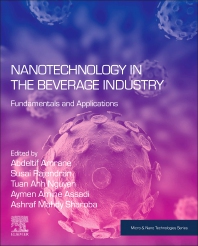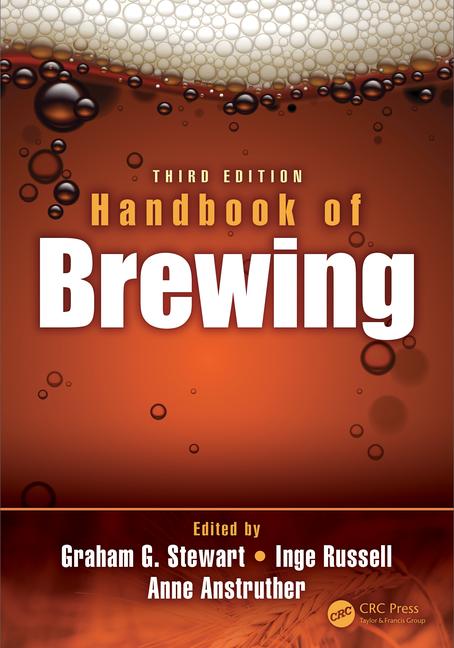Herbs and botanicals offer benefits from the ground up

As beverage manufacturers look to produce functional products that address consumer trends, such as health, wellness, energy, cognition and relaxation, many are turning to herbs and botanicals to meet consumer demands.
The functional and health and wellness categories top the list of where herbs and botanicals have been positioned within the beverage industry so far, says Walter Postelwait, vice president of marketing and sales with BI Nutraceuticals, Long Beach, Calif. Those categories are followed by specific niche products, he says.
Among the number of herbs available, tea is a prominent one being used, especially green and black teas, says Gary Vorsheim, director of extract sales for Martin Bauer Inc., Secaucus, N.J.
The National Center for Complementary and Alternative Medicine of the National Institutes of Health, Bethesda, Md., states that green tea and green tea extracts have been used in beverages for improving mental alertness as well as aiding weight loss. The tea and extracts also are known for containing epigallocatechin gallate (EGCG), an antioxidant catechin.
“The functional attributes of green tea — the thermogenic properties of metabolism — have become more well known,” BI Nutraceuticals’ Postelwait says. “Also the antioxidant properties of green tea — the EGCG — is becoming much more popular.”
Vorsheim also agrees that a top interest of consumers and beverage companies is antioxidants. The active compounds in tea, such as antioxidant polyphenols and flavonoids, are of keen focus to beverage-makers, he adds.
For cognition, Martin Bauer has noticed that herbs and botanicals such as ginseng, guarana, ginkgo biloba and kola nut are being used, which also are used in many energy drinks.
“Those are pretty much the classics that you find in a lot of beverages, primarily for the caffeine found in most of those,” Vorsheim says.
Caffeine is among some of the key benefits of herbs and botanicals, Vorsheim says, because it is a natural raw material with which consumers are familiar. When addressing the energy segment with herbs and botanicals, it is not just about waking up, but maintaining energy levels throughout the day, he adds.
Offering increased function
With the expansion of functional beverages, herbs and botanicals are being incorporated into many of them.
“They’re using them [by] targeting certain health functions,” says Amy McKelvey, director of new markets for Ethical Naturals, San Anselmo, Calif.
McKelvey says that companies can use herbs and botanicals to target heart health, relaxation, mental clarity, energy, immunity, eye health, beauty as well as anti-aging.
Patrick Anderson, Western regional sales manager for Terry Lab, Melbourne, Fla., also sees functional beverages as a market that is emerging.
“The latest trends in the beverage industry with herbs and botanicals seem to be coming in the form of the multi-functional drink,” he says. “Consumers are looking at shopping budgets and are realizing that a drink not only fills the thirst need but is also beneficial as a vitamin enhancer, mineral enhancer, skin rejuvenators, energy, etc.”
Herbs and botanicals often offer multiple benefits, which help aid multi-functional drinks in providing several health claims, Anderson adds.
Time to relax
Among the functional drink segment, some ingredient suppliers have noted product releases that highlight rest and relaxation are expanding. Some of the herbs and botanicals that suppliers have seen used for relaxation purposes include chamomile, lemon balm, passion flower, valerian root, linden flower, balm mint and lavender.
“People are looking to these plants for their anti-anxiety benefits,” Ethical Naturals’ McKelvey says.
For example, Two Leaves and a Bud Tea Co., Basalt, Colo., launched a Better Rest Blend that contains lemongrass, peppermint, chamomile, orange peel, lemon balm, fennel, ginger, rose hip, anise, valerian root and hops. The ingredients were selected to provide concentrated relaxation effects, the company says.
“You’ll see chamomile being used in tea bags … so it’s already known for the hot beverage sector of the North American market as being beneficial to help relax,” Martin Bauer’s Vorsheim says.
He adds that relaxation beverages are designed to pull consumers back from the energy they might feel from the extra caffeine found in the energy drink sector.
McKelvey says that although relaxation beverages are not of the same product magnitude as the energy drink market, she thinks that slowly could change.
“We’re all stretched and over-connected and finding ways to relax and counter that kind of nervous energy that comes with being very busy and very connected,” she says.
Opposed to the high-energy formulations that can be associated with energy drinks, McKelvey notes another energy avenue to which people might look.
“We want an energy that is focused and that’s also a little bit of a calming energy so that we can be more productive in our lives and stay healthy,” she says.
Market innovations
Although ingredient suppliers have seen beverage companies use herbs and botanicals for multiple beverage categories, suppliers still foresee more innovations for these ingredients.
“Some of the biggest challenges are obviously taste when you’re working with botanical ingredients that aren’t juice based,” BI Nutraceutical’s Postelwait says. “You’re trying to capture a lot of your flavonoids and so forth in your botanical product to get it in there, but you also want to keep the off notes down as much as you can.”
In the United States, Vorsheim says that because some herbal raw materials and herbal extracts might not have a pleasant taste that has been one of the biggest problems when formulating health-specific beverages.
“[To] make a beverage that truly provides a function like … some of these relaxation beverages, you have to have a certain amount of extract in there, and when you do that, now you’re adding a flavor issue to your formulation that some people can work around; some people can’t,” he says. “That’s I think a main concern right now. We’re seeing that people gravitate toward hibiscus and certain extracts that have at least a reasonably pleasant taste, and a lot of people are slowly working their way toward these other more functional herbal extracts that present a challenge as they make product.”
To reduce the off notes in herbs and botanicals, Postelwait sees most of the innovation dedicated to the technology of extracting the botanical. He says this also can help address the ingredient’s solubility.
“Not always can you achieve 100 percent on either one — solubility or the reduction of off notes — but getting them down quite a bit is helpful,” Postelwait says.
One way that Ethical Natural’s McKelvey has seen technology address the solubility aspect for resveratol is by using nano-structured lipid carriers, which encases the extract and allows it to be soluble and also helps with the flavor.
“It masks the flavor and allows the molecule to be soluble in water,” she says. “I think you’re going to see a lot more trends with that type of nano-structured lipid carriers for a lot of herbal extracts that are not soluble or that have very strong flavor profiles.”
McKelvey adds that certainly flavor is important because if a consumer can’t drink the beverage, they aren’t going to buy it again. But companies shouldn’t get caught up in solubility, she says.
“I think as society gets healthier and healthier that people are going to be looking for sediment at the bottom of their drink to prove that there’s some yummy herbs and botanicals in there and some true functionality,” McKelvey says.
Innovation also can be focused on finding new beverages that can benefit from use of herbs and botanicals. Whether it is for antioxidant association, reducing the amount of juice used in a product, altering a taste profile, adding them to dairy drinks or for use in kids’ products, Vorsheim sees many ways that herbs and botanicals can expand. And part of that expansion could be aided by consumers becoming more familiar with herbs, he says.
“I think we’re poised for some great activity, and innovation will be inherent with herbs because herbs haven’t really been a mainstay in our culture,” Vorsheim says. “It will take innovation to imbed herbals whether it’s in existing beverages or the future beverages that are being developed.” BI
Looking for a reprint of this article?
From high-res PDFs to custom plaques, order your copy today!







